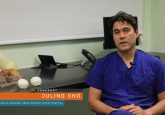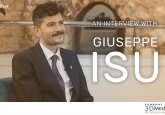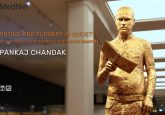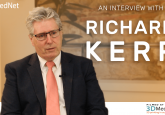Harnessing 3D printing for diffusion tensor cardiovascular MRI in an ex vivo beating heart
Andrew Scott (The Royal Brompton Hospital and Imperial College London; both London, UK) describes the use of 3D printing in the development of MRI-compatible large animal ex vivo beating heart setup.
Register as a member of 3DMedNet for exclusive 3DMedLIVE content
Biography

Andrew D Scott PhD is a Senior Physicist at the Royal Brompton and Harefield NHS Trust (London, UK), Honorary Senior Research Fellow at the National Heart and Lung Institute and a Research Fellow of the Data Science Institute, both at Imperial College London (UK). His role is research focused and he leads several independent projects.
Andrew is currently focused on understanding the links between measures obtained using diffusion tensor MRI methods and the underlying cardiac microstructure and making the imaging methods used in cardiac diffusion tensor imaging precise, reliable, robust and clinically relevant. He has an international reputation for cardiovascular MRI physics, in particular imaging the microstructure of the in vivo heart using diffusion tensor methods. In 2011 his contributions to cardiac MRI were recognised by being named a Junior Fellow of the International Society for Magnetic Resonance in Medicine and in 2018, a Fellow of the Society for Cardiovascular Magnetic Resonance.
Prior to taking up his current post in 2012, Andrew developed MRI techniques for the dynamic imaging of speech in pediatric patients with cleft palates and before that, completed his PhD in MRI coronary vessel wall imaging and respiratory motion correction at the Royal Brompton Hospital and Imperial College London.
“We designed an experiment that allows us to scan a beating heart and then scan an arrested heart – a stopped heart – and compare the two measures so we could look at the effects of the movement on the diffusion tensor cardiovascular magnetic resonance (DT-CMR) measures. In order to do that, we needed something to hold a heart safely and securely in the MRI scanner while we scan it and the only real way of doing that was to was to build a custom kind of chamber that sits in the scanner, and we 3D printed an awful lot of the parts. So 3D printing was really kind of a facilitative method.”
Scott was interviewed at 3DMedLIVE 2019: 3D printing in surgery. To access more exclusive interviews and content from 3DMedLIVE 2019, watch this space on 3DMedNet >>
>> Find out more about 3DMedLIVE
Interview segments:
- Introduction [00:03]
- Diffusion tensor cardiovascular magnetic resonance (DT-CMR) [00:27]
- Using 3D printing printing technologies to study DT-CMR [00:58]
- Interpreting results from DT-CMR with a 3D-printed chamber [01:44]
- Clinically significant data [02:24]
- The future of DT-CMR and 3D-printed chambers [02:55]
You may also be interested in:
- Editorial: 3D printing in MRI and its application in an MRI compatible ex vivo beating heart
- Editorial: 3D printing in congenital cardiology
- Emerging 3D technologies and applications within congenital heart disease: teach, predict, plan and guide
The opinions expressed in this feature are those of the interviewee and do not necessarily reflect the views of 3DMedNet or Future Science Group.






